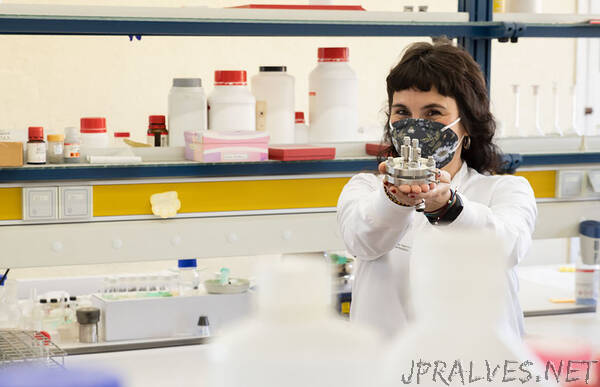
“The UPV/EHU-University of the Basque Country is proposing that caesium cations be used in sodium-air batteries
A multidisciplinary team of UPV/EHU chemists and physicists in collaboration with CIC energiGUNE has shown that adding a caesium salt to the electrolyte of sodium-air (Na-O2) batteries significantly increases the life of the device, which would have a positive impact on electric vehicle range. The work has been published in the prestigious international journal Advanced Energy Materials.
Metal-air batteries offer a promising technology to succeed today’s conventional lithium-ion batteries. One of the most significant advantages of metal-air batteries is that they have a higher energy density than lithium-ion ones, so batteries of this type would give the car an increased range. They would enable range, which is one of the major concerns of car manufacturers, to be considerably minimised.
“Metal-air batteries are among the most sustainable batteries because the materials used are more environmentally friendly. These batteries take oxygen from the air, carry out their electrochemical processes to generate electricity, and when the battery needs to be recharged they release oxygen again, in other words, they work by consuming oxygen and releasing oxygen. That is why they are also known as breathing batteries,” said Idoia Ruiz de Larramendi, a researcher in the Department of Organic and Inorganic Chemistry at the UPV/EHU’s Faculty of Science and Technology.
But “it’s not all pluses. One of the problems associated with these batteries is their limited cyclability, in other words, they can make few charge and discharge cycles”, said Ruiz de Larramendi. So “in this piece of research we focused on the rational design of electrolytes to be deployed in sodium-air batteries. Nowadays, most batteries on the market are lithium-ion ones. However, lithium is a metal whose abundance is limited and which is restricted to only a few countries, so recent years have seen an interest in the development of sodium-based batteries as an alternative, since sodium is a more abundant, cheaper and more sustainable element”, as the UPV/EHU researcher pointed out.
“The electrolyte is responsible for providing the ions inside the battery with mobility. So our aim was to achieve optimum mobility. To do this, in this study we worked with two additives: tetrabutylammonium (TBA) and caesium (Cs) and evaluated their potential to move oxygen anions throughout the battery. Both cations are large ions, larger than the sodium cations we have in the electrolyte. By applying the principles of chemistry and relying on theoretical studies, we understood that they were going to bind better to the oxygen anions, and that happened in both cases,” said Idoia Ruiz de Larramendi. “However,” she went on, “caesium cations have been shown to have greater potential and to be more effective than TBA cations because the Cs charge is more accessible for the oxygen. By adding a caesium salt we managed to improve cyclability and achieve more than 90 charge/discharge cycles. It may not seem like much nowadays, but it is a big step towards the future marketing of these devices.”
According to the multidisciplinary team, “thanks to the correct design of the electrolyte, the operation of sodium-air batteries can be optimised. Obviously, there is room for improvement and we have to keep working on it, but this work is an important step in demonstrating that with a strategy as simple as adding a caesium salt to the electrolyte, we can significantly improve battery cyclability, and that allows us to dream of a new generation of electric vehicles with a longer range”.”
